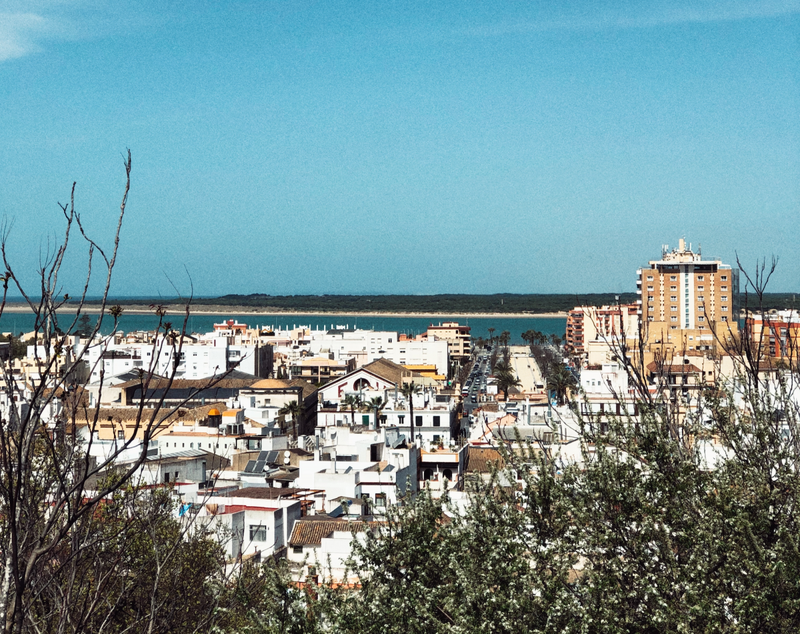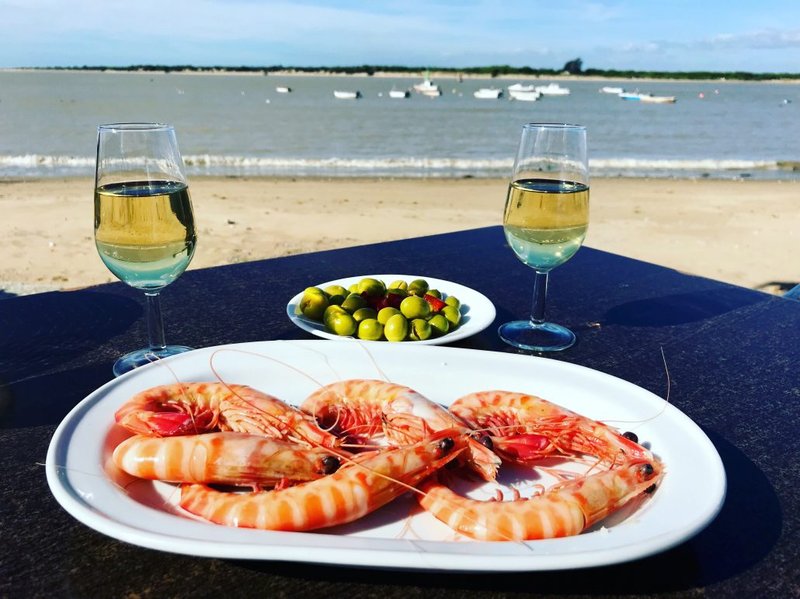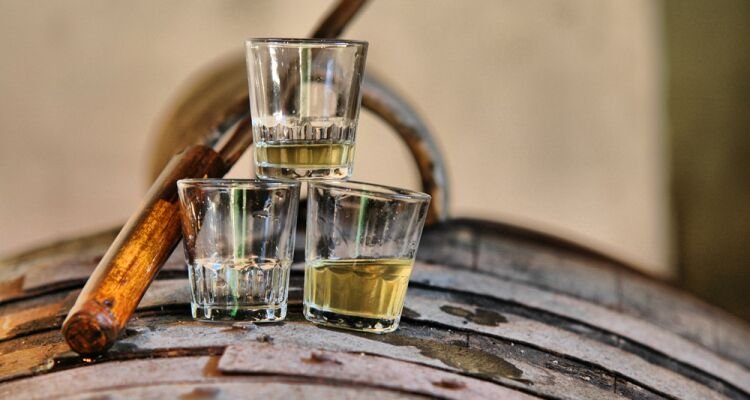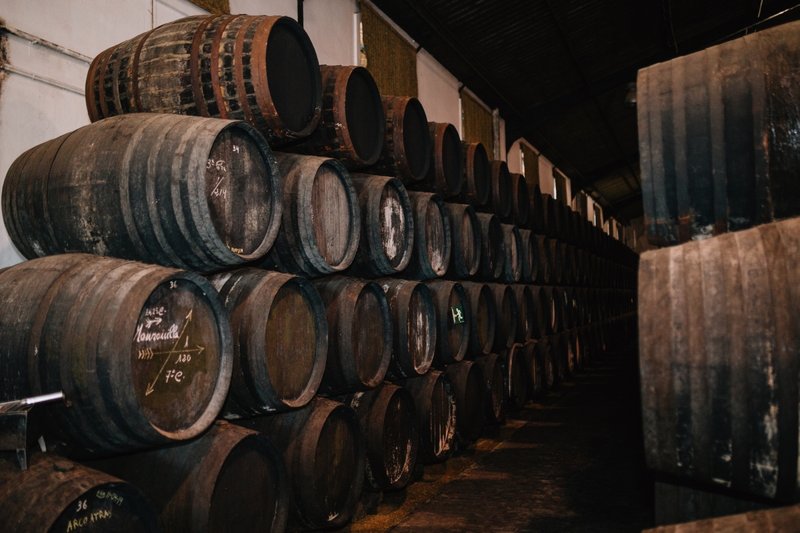The area where Sherry Wine has its origin is often referred to as “the Sherry Triangle”, with its three vertices in Jerez de la Frontera, El Puerto de Santa María and Sanlúcar de Barrameda. However the wine-making area - the so-called “Marco de Jerez” – covers a much more extensive area, both in terms of viticulture and enology.
These three towns, each with its own characteristics, together make up the marked personality and diverse character of Sherry Wines.
The Jerez Grape Harvest Festival of 2019 is dedicated to Sanlúcar de Barrameda, the northwestern-most point of this magic triangle, and home of the Marco’s most successful wine: Manzanilla.
What is the town of Sanlúcar like?
Sanlúcar is a typically Andalucian town of about 70,000 people, although this figure almost doubles in summer when visitors arrive to enjoy the beach. Sanlúcar is located on a promontory at the mouth of the Guadalquivir river, an easy half-hour journey by road from Jerez.
After crossing the outskirts of the town, you reach the Barrio Alto (Upper Neighbourhood), an ancient and noble labyrinth of wineries, churches and palaces with beautiful gardens, perched on a small cliff above the Guadalquivir.
Presiding over this balcony above the river is the impressive Santiago Castle, a bastion which protected the old port of Sanlúcar, departure and arrival point for historic maritime expeditions. The most important and famous of these was the first circumnavigation of the earth, led by Magellan and Elcano exactly 500 years ago.

Views of the Guadalquivir river and the Doñana preserve from Bodegas Barabadillo located in the Barrio Alto de Sanúcar de Barrameda.
Throughout the centuries, sediment deposited under the cliff by the weather and river flow have formed the so-called Barrio Bajo (Lower Neighbourhood): a well-planned area of attractive streets, full of character, which run gently down to the banks of the Guadalquivir.
From the sandy beach, you can see the pine forests of Doñana National Park on the far side of the river, and, to the west, the vast Atlantic. This is the perfect place to watch one of the most stunning sunsets on the planet.
Heading upstream, you come to Bajo de Guia, a riverfront gastronomic hotspot where you can enjoy the seafood feast which arrives daily at the nearby fishing port of Bonanza. And every bar and restaurant menu features Sanlúcar langostinos (prawns), perfect for pairing with Manzanilla.

Mazanilla glasses pairing with Sanlucar prawns, overlooking the beach of Bajo Guía. Photo: Annie B Spanish Kitchen
Like everywhere else in the world, the towns of the Marco de Jerez have not escaped the homogenising effects of cultural globalisation and demographic movements. For this reason their inhabitants live, think, get along together, and generally behave in a similar way to the rest of the Spanish population, and beyond.
But luckily this region also has a collective identity comparable to territorial character, and marked out indelibly by wine. And of all the towns in the “Sherry Triangle”, local idiosyncrasy is most noticeable in Sanlúcar. The sanluqueño is friendly, hard-working, proud of his town, and of its wine and gastronomy. Sometimes a little Sanlucar-obsessed, but almost always justifiably so.
Additionally, in enological terms, Sanlúcar de Barrameda possesses a series of uniquely distinctive characteristics. No one would argue that Sanlúcar is the spiritual home and origin of biological ageing as it exists in the Marco. The first historical references to the layer of flor (yeast) inside the cask, under which the wine ages, were made here. What is more, the taste for these pale wines (without the least glint, according to 19th-century botanist Boutelou), known as finos in the other towns, spread throughout the area starting in Sanlúcar.
Local vocabulary
With its rich history and well-defined character, Sanlúcar has developed clear differences which over the years have become reflected in its own vocabulary and customs, and are clearly identifiable as uniquely sanluqueño.
For example, the traditional palomino grape, used to make both fino and Manzanilla wines, is called listán in Sanlúcar, while the solera/criadera system of ageing and blending wine is known locally as the “class system”, after the term used for each row of butts which forms a soleraje. In Sanlúcar, the solera or ground-level row is know as the first class, the row above is the second class, and so on.
In addition, each of the casks on the bottom row of stacked butts traditionally rests on blocks of oyster stone (bajetes) rather than the typical palos de escalera (wooden ladders) used in other Marco towns.
The venencia, a characteristic instrument of Jerez’s bodegas which is used to draw wine samples from the casks, has been replaced in Sanlúcar by a caña. Similar, but in a much more humble style, this is literally a stick of cane cut lengthways to make a rod about a metre long, ending in a sort of cup formed by the cane, open on one side and closed on the other.
The same name is given to the typical glass in which Manzanilla from Sanlúcar is traditionally drunk (elsewhere, a caña is a small glass of beer). A gorrión is larger than the caña, while a castor is even bigger. Lastly, the measuring units of land and liquid are also different here: neither the aranzada (area of 3000-4000m2) nor the arroba (usually around 16 litres) is the same here.

In Sanlúcar de Barrameda, the venencia, the instrument used to draw tasting samples out of a cask, is known as a caña and is made of carved reed or bamboo. The glass pictured is also known as a caña.
All these variations in vocabulary are facets of a particular identity centred on a wine which is also individual, and whose features are inextricably linked to the place where it is made: Manzanilla. The authentic character of these wines is thanks to the age-old technique of biological ageing inside the sanluqueño bodegas, which in turn is affected by the climate.
Climate conditions
The combination of elements associated with the bodegas where the wines are aged has a very specific influence on the Marco wines. This is known as the “terroir of the bodega”, a combined effect between its microclimate, the exact blend of yeasts growing in the interior of the casks, and traditional practices used in wine-making, developed over time. These aspects mark out the difference between a wine’s evolution in one bodega and another, as well as in one town or another.
Moreover, the prevailing microclimate conditions in Sanlúcar foster a long period of high activity for the yeasts which make up the flor, thereby reducing the periods of stress which this layer of yeast suffers in other areas of the Marco. These may be caused by extreme temperatures – in winter as well as summer – or by low levels of moisture.
Sanlúcar’s unique microclimate is thanks to three factors: the Guadalquivir river, which marks a natural boundary to the north of the town, beyond which is the astonishing Doñana Natural Park; the Atlantic Ocean, into which the river flows and which lies a few kilometres to the west; and the Marisma, an extensive area of wetland which covers the original estuary and is completely flat. Due to these conditions, the extreme temperatures typical of southern Europe are milder here, and the humidity levels are higher.

Inside Bodegas Yuste, Sanlúcar de Barrameda.
Another contributing factor is the orography of Sanlúcar, which is built on two terraces at different levels: the Barrio Bajo (Lower Neighbourhood) at sea level, and the Barrio Alto (Upper Neighbourhood) a few metres above, set atop an old cliff which is the site of Santiago Castle. When the westerly sea breeze strikes the barrier presented by the Barrio Alto, it slows down and disperses its moisture around the whole town centre.
The proximity of the Guadalquivir estuary results in a prevalence of westerly winds, and therefore a less continental nature (greater temperature fluctuations) than in the rest of the Marco.




